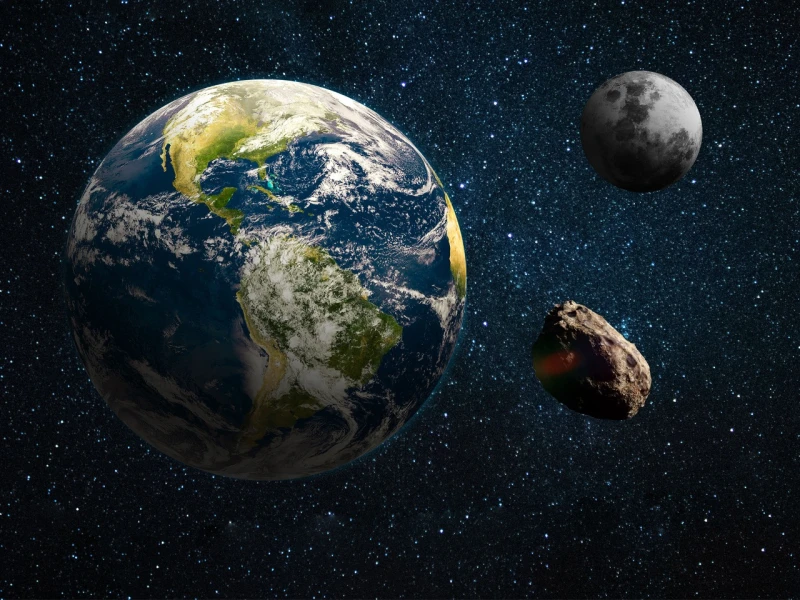Earth, it turns out, hasn’t been travelling alone through the cosmos all this time. NASA has confirmed that our planet has a small, temporary celestial companion — a tiny asteroid named 2025 PN7, which has been orbiting in sync with Earth for about six decades.
Discovered earlier this year by astronomers at the University of Hawaii, 2025 PN7 isn’t a true moon but a “quasi-moon” — a rare type of object that moves in almost the same orbit as Earth around the Sun. It appears to shadow our planet, looping along a path so similar that it seems to travel beside us on our cosmic journey.
At an estimated 18 to 36 metres wide — roughly the height of a small building — 2025 PN7 is minuscule compared to our actual Moon, yet its discovery carries immense scientific value.
A Cosmic Companion
Unlike the Moon, which is locked to Earth by gravity, this asteroid isn’t gravitationally bound to us. Astronomers describe it as a kind of celestial jogging partner — close enough to keep pace, but never quite within reach.
According to NASA’s analysis, the asteroid has likely been accompanying Earth since the 1960s and will continue to do so until around 2083, after which it’s expected to drift away into open space once again.
At its nearest, 2025 PN7 comes within 4 million kilometres of Earth — about ten times farther than the Moon — and at its farthest, it stretches out to nearly 17 million kilometres. These variations are caused by the delicate tug-of-war between the gravitational pull of the Sun and other planets.
Tricky to Spot, Valuable to Study
The discovery itself was a feat of precision. The University of Hawaii team first noticed a faint dot moving against the stars during a routine telescope survey. After weeks of tracking, data revealed that the object was following Earth’s orbit almost perfectly — prompting NASA’s confirmation of its quasi-moon status.
So far, astronomers have identified only eight quasi-moons orbiting near Earth. Each one provides crucial data to better understand how asteroids move, how our planet’s gravity influences space debris, and how these interactions shape our solar system’s dynamic environment.
More Than a Curiosity
To scientists, 2025 PN7 is more than just a fascinating footnote in astronomy. Quasi-moons like this help refine orbital models and improve predictions for near-Earth asteroids — a vital task in tracking potentially hazardous space rocks.
Moreover, their proximity and stability make them intriguing targets for future space missions. Unlike distant asteroids, quasi-moons could one day serve as accessible testing grounds for spacecraft technology, resource extraction, or deep-space navigation.
A Silent Traveller
While 2025 PN7 will never outshine our real Moon, its presence serves as a quiet reminder of how complex and interconnected our solar system truly is. Invisible to the naked eye yet faithfully travelling beside us, it’s a silent companion — keeping step with Earth, orbit after orbit, as our planet continues its endless lap around the Sun.
Source: NASA, University of Hawaii, Unionrayo


 Prev Post :
Prev Post :
